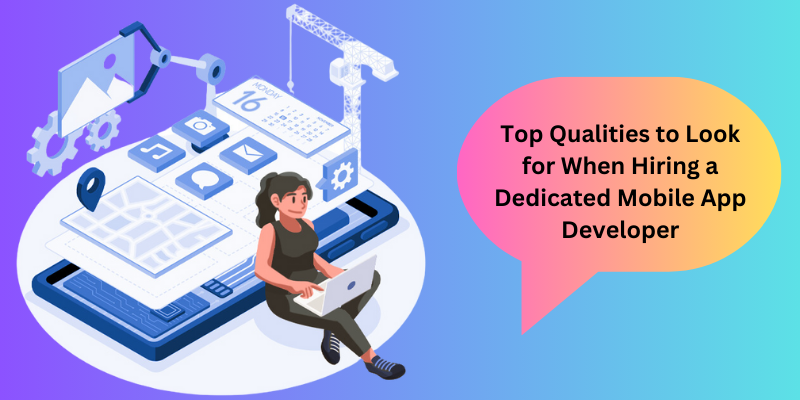Today, businesses can market their products and services to a wide audience through apps. Mobile app development is the process of creating these applications for mobile devices such as smartphones and tablets. Apps increase brand recognition, drive traffic to websites and help retain customers. This is also a great way to sell more products or services directly to the customer without intermediaries and control costs at the same time. Nevertheless, developing an app isn’t easy. Businesses need to identify target audiences, choose a suitable platform, develop an idea into a finished product, and much more. There are many different things you should know about mobile app development before you get started so that you can avoid common pitfalls and make informed decisions along the way. With that in mind, here are some helpful tips on how to choose the correct technology for your mobile app development project:
Define the Purpose of Your App
The first question you will need to ask yourself when selecting the correct technology for mobile app development is why you want an app. Do you want to boost customer engagement? Market products? Share information? Or all of the above? Identifying your intent will not only help you determine which platform or technology you should use, but also how much time and money to invest in the development process.
Choose the Right Platform
Deciding on the right platform along with the correct technology for mobile app development is important. There are many different options to choose from, and each has its own set of advantages and disadvantages. For example, native apps offer the best performance. They are usually more expensive because they require a lot of code. But, the app will be faster on mobile devices and will provide a better user experience since it isn’t dependent on browser compatibility issues. HTML5 apps are cheaper than native apps because they don’t use as much code. The downside is that performance can be unpredictable. In order to make an informed decision you should also ask yourself what you hope your audience will do with your app after downloading it onto their device – this will help you determine which type of platform would be most appropriate for your application needs and target audience.
Assessing User Needs
The first and most important step in mobile app development is to identify the needs of potential users. You need to figure out who your target audience is so you can tailor your app to their specific needs. For example, if you’re interested in developing an app for food delivery, will it be geared toward those who are gluten-free? Furthermore, you have to consider the platform that best suits your needs. If you intend on releasing apps on a variety of platforms, then you may want to choose a cross-platform development tool instead. Those who are interested in developing apps exclusively for Android should use Android Studio as their development tool while iOS users would use Apple XCode.
Check iOS and Android Compatibility
Most mobile devices today use either iOS or Android operating systems. There are also some that use Windows Mobile or Blackberry, but they are less popular. Before you start developing your app, it is important to check the compatibility of your chosen platform with the operating system of the device that you want to target. If the two don’t match, you will need to develop another app for another device. This means that if your goal is to reach as many people as possible, you should take a close look at what operating system they have on their phone and then choose a technology based on those results.
Be Clear on Branding Requirements
Before you start your mobile app development process, you should be clear on what branding requirements are. Make sure that the technology you choose allows for personalization so that you can promote your brand and distinguish it from competitors.
Don’t Forget about UX and UI Design
UX and UI design are both important aspects to take into consideration when developing an app. UX refers to the user experience, while UI design refers to the user interface (or the way your product or service looks). Factors like these can make or break your app. For instance, you might have a great idea for an app but if it doesn’t work correctly then nobody will use it. This is something to think about before starting your project. Keep in mind that even if something seems perfect, there’s always room for improvement and enhancement.
Native App Technology Stack
Native apps come on the top When it comes to robustness and performance. A business usually looks to achieve some quality standards in their mobile journey are the ones that their investment in Native App Development perfectly solves. Native Apps allow organizations to coordinate the device's in-built functionalities in their portable application without requiring an external third-party API. We usually talk in the context of Android and iOS App development when we talk about Native apps. These two platforms come with different capabilities that call for different technology stacks.
Android Tech Stack
Programming Languages: Kotlin and Java
Java language is still used greatly by many android app development companies although Kotlin is the official programming language for Android app development. Java's popularity makes it one of the best technology stacks utilized by the android mobile application development company. When it comes to Kotlin, it is also not lying too behind in the popularity race. Kotlin has become a much more stable option for mobile app developers in recent times to work around in the Android studio. Kotlin is lightweight and much less verbose making it a solution to all the Java problems.
Toolkit: Android Developer Tools & Android Studio
iOS Tech Stack
Programming Languages: Swift and Objective-C
Swift and Objective-C are the most preferred languages that find themselves being a part of the iOS mobile app development technologies. Objective-C being the superset of C language provides object-oriented capabilities and a dynamic runtime environment. But we here at JPLoft recommend Swift Over Objective-C because the language offers codes that are a lot less error-prone. To cut down the initial app size and increase its performance it has dynamic libraries which are uploaded directly to memory.
Toolkit: Xcode and IntelliJ AppCode
Also Read: E-Wallet Mobile App Development: Features & Cost
Hybrid App Technology Stack
Hybrid apps are generally developed with the help of standard web techniques like HTML5, CSS, and JavaScript. These apps can run on all platforms and tend to provide access to API. Cordova, Sencha Touch 2, and Ionic are the most common frameworks for the development of Hybris Apps. Confused about choosing the Correct Technology for Mobile App Development? Don’t Worry! Contact us for a free consultation with our experienced mobile app developers. Since we have discussed both Native Apps and Hybrid Apps, it is time to move our focus to the Tech Stack for Cross-Platform App Development
Cross-Platform App Tech Stack
If your business requires an app that would run on multiple platforms like Android, iOS, and Web then a Cross-platform app is the best fit. The main objective why businesses go with cross-platform app development is the simple fact that they are able to operate around a greater demographic. Developers get the advantage to use a single code base for Android and iOS operating systems. Let’s talk about the most related stacks:
React Native
React Native helps in building mobile apps in a JavaScript or Type-Script-based framework. This utilizes the same UI building blocks in Android and iOS and offers quick error detection, a simple interface, and high functionality. React Native development services offers the advantage of using the same code that runs smoothly for both Android and iOS apps.
Xamarin
Generally accomplished with the C# language, the Xamarin framework offers direct access to the local APIs of Android and iOS. Moreover, it permits the usage of the whole toolkit. However, not like the other frameworks, Xamarin has restricted free functionality and some particular pay-for-use features.
Summing up
When developing an app, businesses need to identify their target audience and choose a suitable platform. With these two decisions, you should be able to develop a plan for your mobile app project. Understanding the different types of apps and what you want them to do, it will make the process much easier. Choosing the Correct technology for mobile app development is an important part of your project as well. There are many things you need to know before getting started so that you can avoid some common pitfalls and make informed decisions along with your plans. For example, there are different types of apps - social media apps, utility apps, entertainment apps, and more - and what they do varies based on those types. These are the top ways to choose the correct technology for mobile app development.








